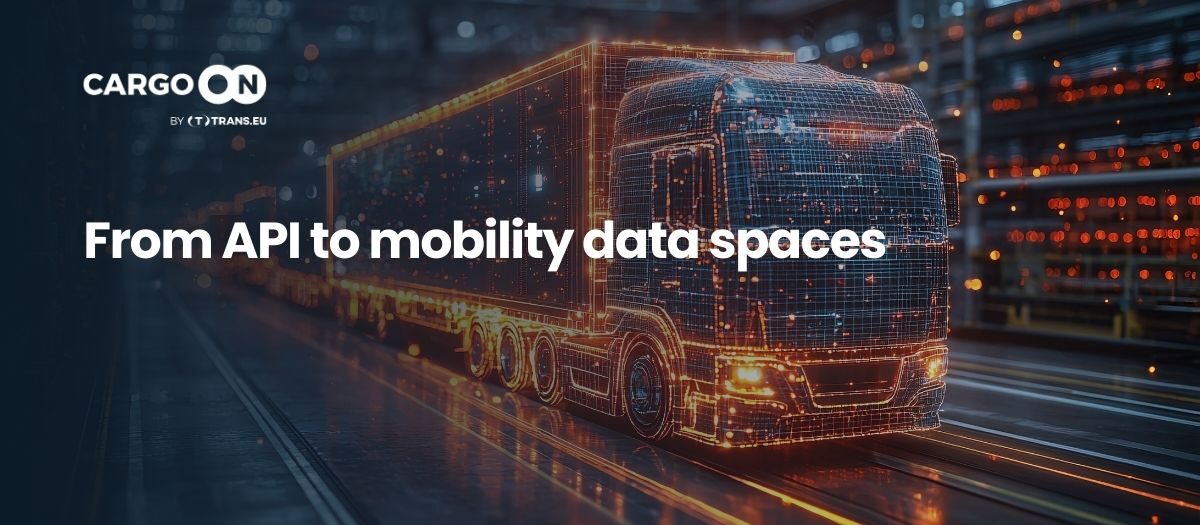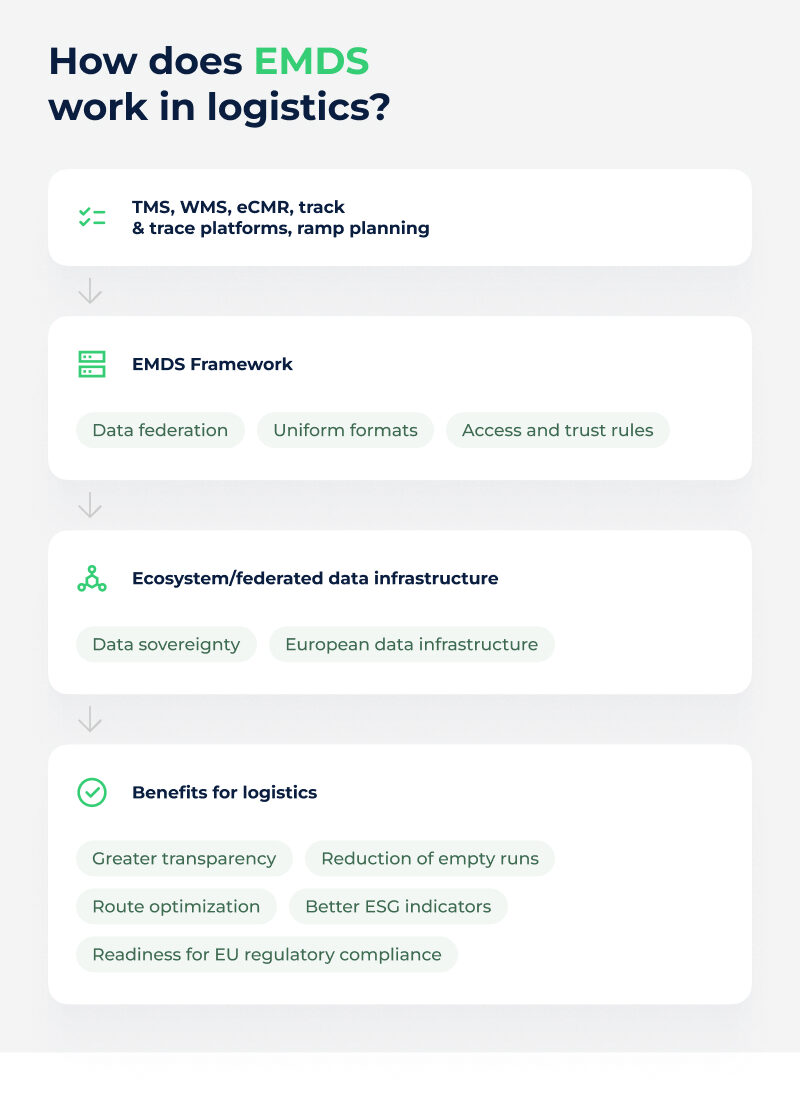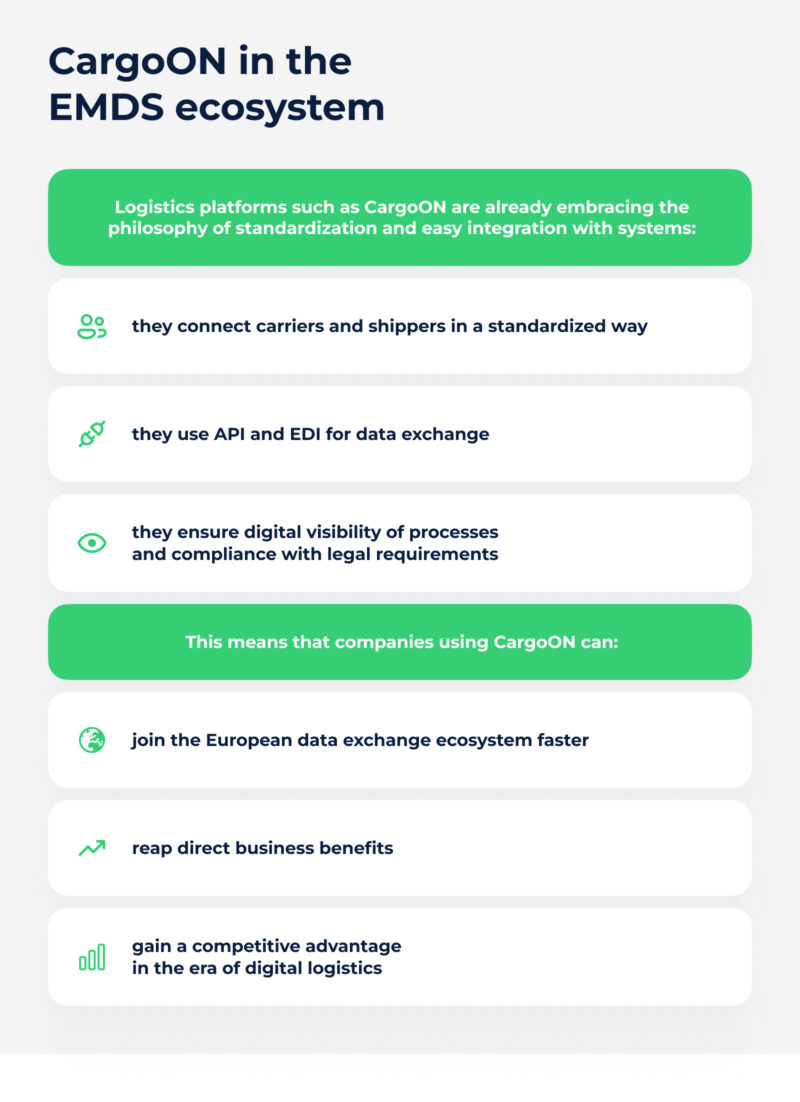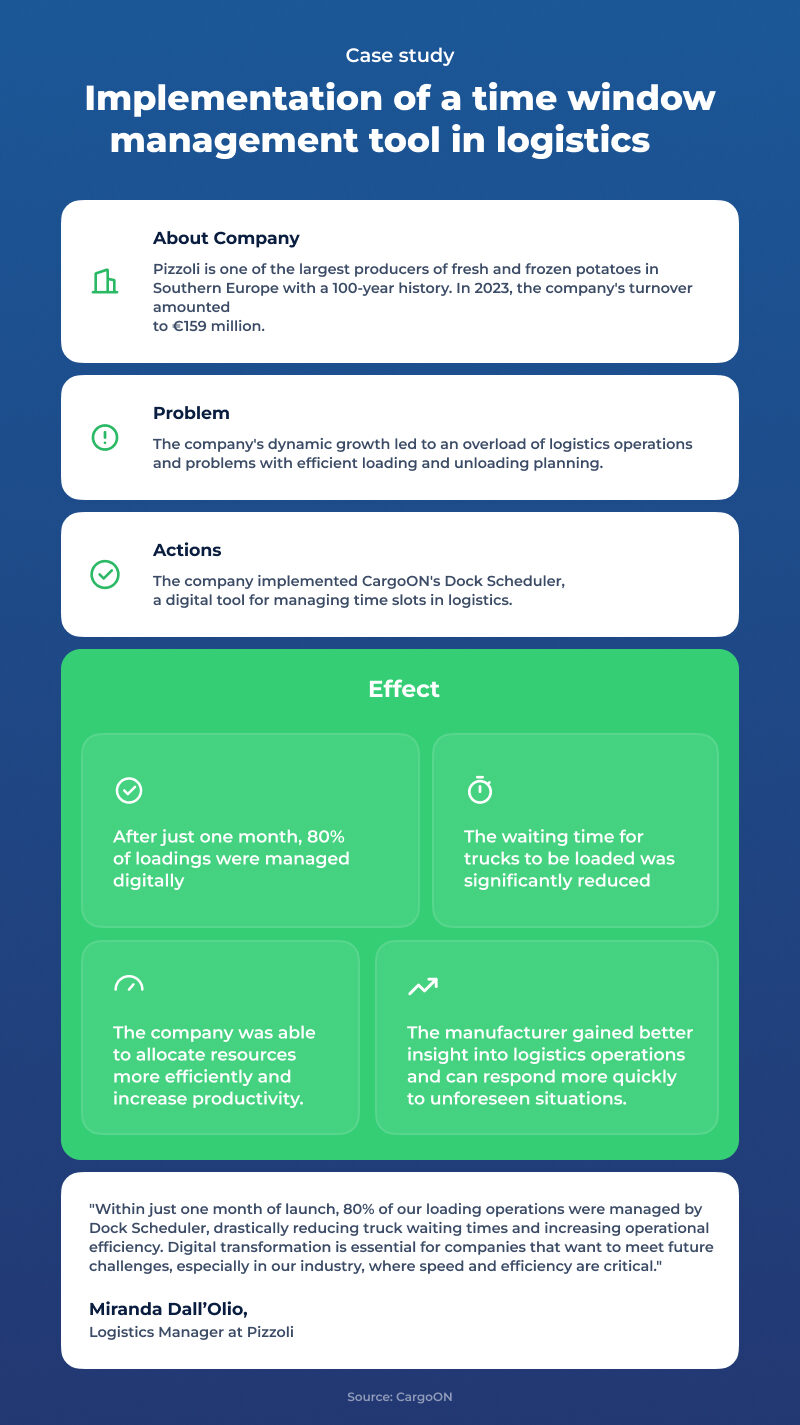From API to mobility data spaces

A strategic respnose to data fragmentation in supply chains API and EDI integrations are an important step in the digitization of logistics, but on a European scale they are no longer sufficient to ensure full information exchange in a distributed transport ecosystem. The next stage is the transition to data sharing models – so-called Data Spaces, which allow market participants to exchange information on standardized principles while maintaining control over their own data.
In logistics, the breakthrough is expected to be the European Mobility Data Space (EMDS), an EU initiative aimed at integrating fragmented transport data sources into a single interoperable ecosystem. EMDS is not a central database but a set of legal, technical, and organizational frameworks that enable information exchange between different entities based on trust, interoperability, and regulatory compliance.
In the context of the transport industry, this means the ability to connect data from multiple sources, such as:
- TMS and WMS systems,
- customs platforms and eCMR,
- track & trace solutions,
- loading planning systems.
Currently, this data often exists in inconsistent formats, requires manual integration, and does not provide full \”end-to-end\” visibility of processes. EMDS aims to remove these barriers through the standardization of formats and data federation.
Business benefits and regulatory compliance
Thanks to EMDS, logistics companies, carriers, and manufacturers will gain:
- greater transparency of operations and supply chains (visibility),
- better planning and optimal resource utilization,
- faster response to disruptions,
- compliance with EU regulations such as the Data Act.
EMDS is part of the Sustainable and Smart Mobility Strategy and the European Data Strategy. The European Union has allocated over €25 million to this project, including for pilots and proof-of-concepts to test solutions in practice.
The diagram below illustrates the role of EMDS in the logistics ecosystem.

Logistics platformization
Logistics platforms work just like external integration platforms that eliminate the need for independent integration with each carrier: the ERP/TMS provider uses a ready-made API interface, and the platform aggregates data from all transport connections. Such solutions generate a wealth of data that can be analyzed to create KPIs, monitor ESG, operational efficiency, or transport costs.

According to MarketsandMarkets, the value of the global TMS market will increase from $16 billion in 2024 to over $40 billion in 2029. This dynamic growth is primarily driven by the need to automate logistics processes and the growing expectations of customers for transparency and timeliness of deliveries.
The practical benefits of implementing TMS systems go far beyond basic automation, especially in large manufacturing and trading companies with complex supply chains. TMS includes functionalities such as:
- real-time route planning and optimization,
- transport monitoring,
- cost management and transport invoices,
- KPI analysis and ESG reporting.
The widespread platformization of the delivery sector is possible thanks to platforms that combine selected TMS functions with access to a network of carriers (e.g., CargoON, Transporeon, Alpega). They focus on digitising cooperation with external carriers and forwarders, offer quick implementation and immediate access to capacity, and most importantly, integrate with existing TMS/ERP and TMS systems.
As a result, standardization using GS1, EDI, TMS or thanks to logistics platforms allows manufacturing and trading companies to achieve a higher level of operational efficiency, resilience to disruptions and compliance with ESG requirements and EU regulations.

Summary
The EMDS is a strategic EU initiative aimed at integrating fragmented transport data into a single interoperable ecosystem. Based on the principle of data sovereignty and compliant with regulations (Data Act), it enables companies to achieve:
- full supply chain transparency,
- reduction of empty runs and CO2 emissions,
- faster response to disruptions, improved ESG reporting and compliance.
Platforms like CargoON are a natural connector to EMDS – they already provide standardization, API/EDI integrations, and digital process visibility. This means that companies using such solutions are ready to enter the European data federation and can quickly build a competitive advantage in the era of digital logistics.
—
References
-
MarketsAndMarkets, Transportation Management System Market by Solutions (Planning & Execution, Order Management, Analytics & Reporting, Routing & Tracking), Transportation Mode (Roadways, Railways, Airways, Maritime), and End User – Global Forecast to 2030, August 2025, https://www.marketsandmarkets.com/Market-Reports/transportation-management-market-232446179.html, accessed: 18.08.2025
-
European Commission, Communication from the Commission to the European Parliament, the Council, the European Economic and Social Committee and the Committee of the Regions, Establishing a common European mobility data space, 29 November 2023, https://ec.europa.eu/info/law/better-regulation/have-your-say/initiatives/13566-Transport-data-Establishing-a-common-European-mobility-data-space-Communication_en, accessed: 18.08.2025
